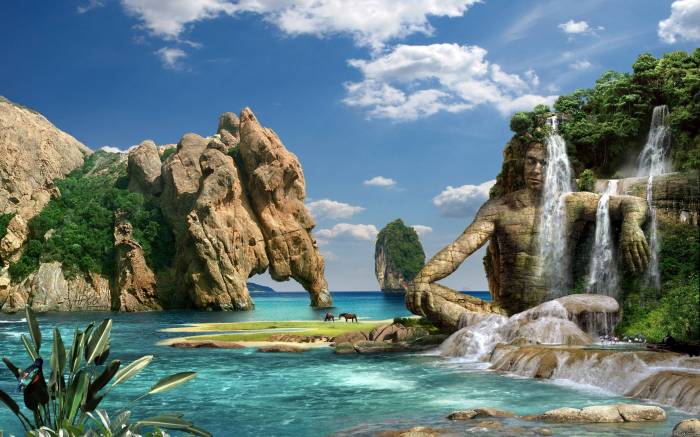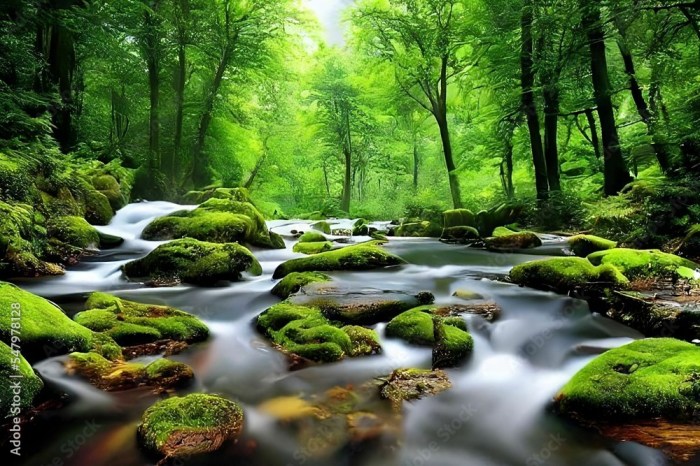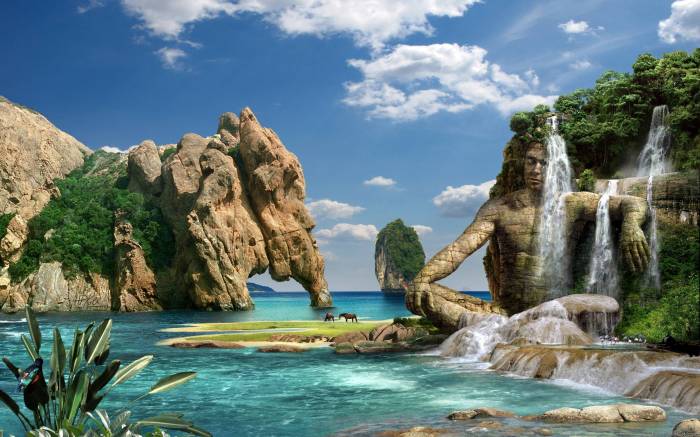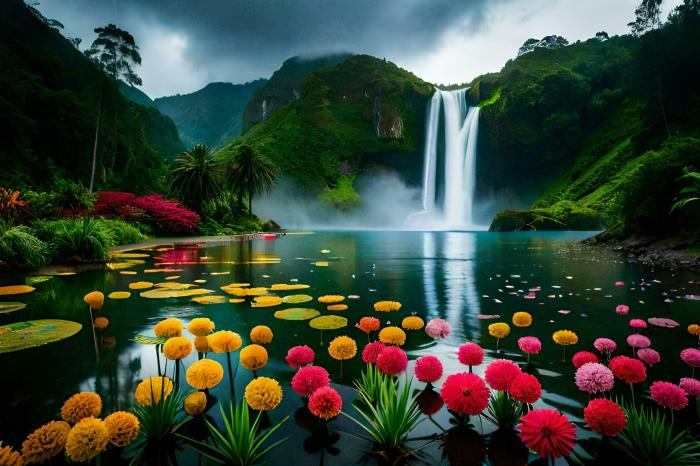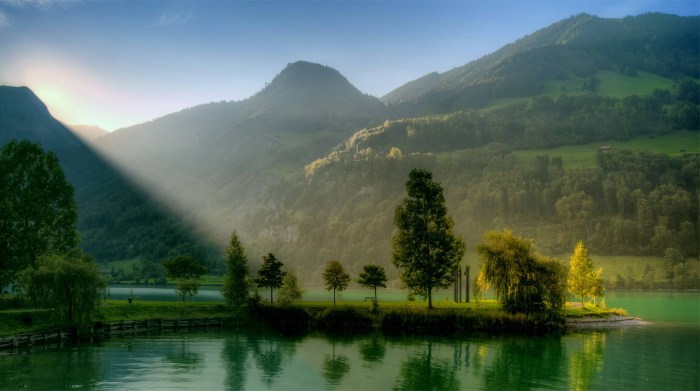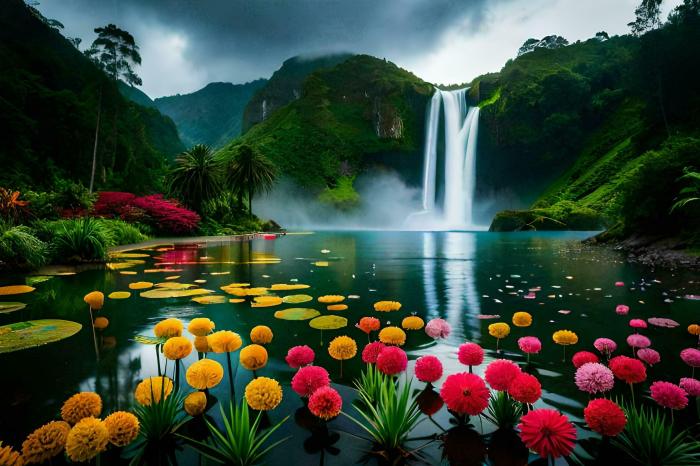Remote and rugged adventures in Churchill Manitoba offer a unique opportunity to experience the raw beauty and wildlife of the Canadian Arctic. From wildlife viewing to kayaking, Churchill’s remote location provides a thrilling escape. This guide dives into the diverse adventures, wildlife encounters, planning essentials, local culture, safety considerations, and sustainable tourism options available in this fascinating destination.
This will help you plan your epic journey to Churchill!
Churchill, Manitoba, a gateway to the Canadian Arctic, stands out with its unique blend of remote wilderness and abundant wildlife. This city is ideally positioned for intrepid adventurers seeking an authentic Arctic experience. Explore its diverse offerings, from the thrilling hunt for beluga whales to the serenity of hiking through the tundra, making your trip one to remember.
Introduction to Churchill, Manitoba
Churchill, Manitoba, a town nestled on the shores of Hudson Bay, stands as a unique gateway to the Canadian Arctic. Its location, bathed in the raw beauty of the Arctic Circle, presents unparalleled opportunities for exploration and adventure. The city’s history intertwines with the region’s rich wildlife and vast wilderness, making it a prime destination for those seeking remote and rugged experiences.
This article will delve into the city’s distinctive characteristics, its historical significance, and the factors that make it ideal for unforgettable Arctic adventures.Churchill’s historical significance as a gateway to the Canadian Arctic is undeniable. For generations, it has served as a vital hub for trade, exploration, and scientific research in the region. Its strategic location at the mouth of Hudson Bay facilitated access to the vast Arctic territory, making it a crucial link between the southern part of Canada and the northernmost regions.
The city’s enduring legacy continues to inspire those who seek to understand and appreciate the unique environment of the Arctic.
Unique Characteristics of Churchill
Churchill’s geographical position on Hudson Bay, coupled with its proximity to the Arctic Circle, creates a unique and captivating environment. The city’s harsh, yet captivating, climate, marked by long winters and short, cool summers, contributes significantly to its distinct charm. This climate, while challenging, also fosters a unique ecosystem that attracts numerous wildlife species. The combination of extreme weather conditions, the abundance of wildlife, and the city’s historical significance makes it an ideal destination for those seeking remote and rugged adventures.
Churchill’s Connection to the Arctic
Churchill’s deep-rooted connection to the Arctic is reflected in its history and its present-day role as a vital research and exploration hub. The town’s location at the northern edge of the continent ensures a direct link to the Arctic’s vast expanse. This location provides exceptional opportunities for witnessing the unique flora and fauna of the region. From the majestic polar bears to the abundant migratory birds, Churchill offers a glimpse into the heart of the Arctic ecosystem.
The city’s proximity to the Arctic Circle also contributes to its distinctive charm, fostering a unique atmosphere that appeals to those seeking an immersive experience.
Factors Suitable for Remote and Rugged Adventures
Churchill’s suitability for remote and rugged adventures is multifaceted. The city’s remote location, coupled with its challenging terrain and weather patterns, creates an environment that demands resilience and adaptability. This rugged landscape presents opportunities for unforgettable experiences in the Arctic. The city’s proximity to vast wilderness areas, such as the Churchill Northern Study Area, fosters the exploration of pristine ecosystems.
Comparison with Other Arctic Adventure Destinations
| Destination | Accessibility | Activities | Similarities | Differences |
|---|---|---|---|---|
| Churchill, Manitoba | Relatively accessible via air or train; road access limited. | Wildlife viewing (polar bears, whales, migratory birds), kayaking, hiking, snowshoeing, dog sledding, ice fishing. | All destinations offer opportunities for wildlife viewing and outdoor activities. | Churchill’s accessibility by air and rail offers a balance between ease and remoteness. |
| Iqaluit, Nunavut | Accessible primarily by air. | Whale watching, kayaking, hiking, snowmobiling, dog sledding, cultural experiences. | Both destinations offer a chance to experience the unique culture and wildlife of the Arctic. | Iqaluit is more remote than Churchill, with limited road access. |
| Yellowknife, Northwest Territories | Relatively accessible by air. | Northern lights viewing, hiking, fishing, wildlife viewing, canoeing, snowmobiling. | All destinations offer opportunities for outdoor activities and unique experiences. | Yellowknife offers a different perspective of the Arctic, with a focus on the Canadian Shield landscape. |
| Tromsø, Norway | Highly accessible by air and ferry. | Northern lights viewing, hiking, kayaking, whale watching, exploring the city. | All destinations are situated in Arctic or sub-Arctic regions, allowing for similar outdoor experiences. | Tromsø offers a more developed infrastructure compared to Churchill, offering more choices in terms of activities and transportation. |
Types of Remote Adventures
Churchill, Manitoba, offers a unique array of remote adventures, drawing visitors into the heart of the Canadian wilderness. The vast landscapes, abundant wildlife, and challenging terrain provide opportunities for unforgettable experiences. From thrilling wildlife encounters to serene kayaking expeditions, the possibilities are endless. Each adventure type presents its own set of rewards and challenges, catering to varying levels of experience and desired intensity.The remote nature of Churchill presents both advantages and difficulties.
The vastness of the region, while offering breathtaking scenery and unparalleled wildlife viewing, necessitates careful planning and a certain level of self-reliance. Understanding the challenges and rewards inherent in each activity is crucial for a safe and fulfilling trip. These factors, combined with the unique charm of Churchill’s surroundings, make it a truly remarkable destination for outdoor enthusiasts.
Wildlife Viewing
Wildlife viewing in Churchill is a quintessential experience. The town serves as a crucial hub for observing polar bears, beluga whales, and other Arctic wildlife. Challenges include unpredictable weather, varying animal behavior, and the necessity for specialized knowledge of wildlife safety protocols. Rewards include the potential to witness incredible displays of nature, including rare and unforgettable animal interactions.
The expertise needed ranges from basic knowledge of wildlife observation etiquette to advanced knowledge of polar bear safety. Appropriate guide services are essential to maximize the chances of safe and rewarding wildlife encounters.
Kayaking
Kayaking in Churchill’s waters presents an immersive connection with the environment. The vast Hudson Bay offers opportunities for serene paddling, allowing for intimate observation of the surrounding landscape and wildlife. Challenges include potentially unpredictable currents, ice conditions, and inclement weather. Rewards include the opportunity to experience the raw beauty of the bay, including the potential for encounters with seals, seabirds, and other wildlife.
Expertise varies from basic kayaking skills to advanced techniques for navigating challenging conditions.
Hiking
Hiking in the Churchill region offers the chance to explore diverse landscapes, from tundra to woodland areas. The remote terrain and variable weather conditions require a high level of preparedness. Rewards include stunning views, potential wildlife sightings, and the personal satisfaction of traversing challenging trails. Expertise needed depends on the specific trail; some are easily accessible, while others require significant experience in navigating remote wilderness.
Fishing
Fishing in Churchill’s waters offers a unique angling experience. The area boasts diverse fish populations, including Arctic char and various other species. Challenges include the need for specialized fishing gear and knowledge of local regulations and fishing seasons. Rewards include the thrill of catching fish in a pristine environment and the opportunity to enjoy the serenity of the remote surroundings.
Expertise levels vary depending on the type of fishing; some require minimal skills, while others demand advanced knowledge of fishing techniques and equipment.
Remote Adventure Packages
| Adventure Package | Activities | Duration | Cost (USD) | Suitable Experience Level |
|---|---|---|---|---|
| Polar Bear Encounter | Wildlife viewing, polar bear safety training, guided tours | 3 days/2 nights | $2,500-$3,500 | Beginner to intermediate |
| Kayaking Expedition | Kayaking tours, wildlife spotting, guided safety sessions | 4 days/3 nights | $1,800-$2,800 | Intermediate |
| Arctic Hiking & Wildlife Safari | Hiking, wildlife viewing, photography workshops | 5 days/4 nights | $3,000-$4,000 | Intermediate to advanced |
| Fishing & Wildlife Adventure | Fishing trips, wildlife viewing, guided expeditions | 7 days/6 nights | $3,500-$5,000 | Intermediate to advanced |
Wildlife Encounters: Remote And Rugged Adventures In Churchill Manitoba

Churchill, Manitoba, is renowned for its incredible wildlife viewing opportunities. The unique Arctic environment attracts a diverse range of species, offering visitors the chance to witness majestic creatures in their natural habitat. These encounters are a highlight of any remote adventure, but responsible and respectful observation is paramount.Understanding the habits and behaviors of these animals is crucial for a safe and enjoyable experience.
This section dives into the fascinating world of Churchill’s wildlife, providing insights into their characteristics, safety guidelines, ethical viewing practices, and optimal viewing times and locations.
Diverse Wildlife Species
Churchill’s remote areas are home to a remarkable array of wildlife. Polar bears, with their iconic white coats and powerful builds, are a highlight. Their hunting strategies and adaptation to the harsh Arctic environment are truly fascinating. Beluga whales, known for their distinctive white color and playful nature, often grace the waters around Churchill. These marine mammals are a delight to observe, especially when they breach or surface.
Walruses, with their impressive size and unique snouts, are another impressive sight. Their social interactions and impressive displays of strength make them a truly memorable encounter. Caribou, known for their resilience and remarkable migrations, traverse the tundra in vast herds. These animals offer a powerful reminder of the strength and endurance of nature.
Safety Guidelines for Wildlife Interactions
Respectful observation is key to ensuring both your safety and the well-being of the wildlife. Always maintain a safe distance from any animal, never approaching or attempting to interact with them. Never feed wildlife, as this can disrupt their natural behaviors and potentially endanger them. Keep your group close together, especially when in areas where predators are present.
Be aware of your surroundings and anticipate the animals’ movements.
Ethical Wildlife Viewing Practices
Ethical wildlife viewing goes beyond simply observing the animals. It involves minimizing disturbance to their natural environment and ensuring their well-being. Refrain from using flash photography, as it can startle or stress the animals. Respect their space and avoid making sudden movements that could frighten them. Follow the guidance of experienced guides or park rangers to ensure responsible viewing practices.
Churchill, Manitoba, offers incredible remote and rugged adventures, from polar bear viewing to dog sledding. Thinking about a change of pace? Consider exploring the diverse culinary scene and stunning winelands of South Africa, like those found in south africa hotels cuisine winelands. But, honestly, the wild beauty and unique wildlife of Churchill still calls to me.
It’s just a different kind of adventure.
Optimal Viewing Times and Locations, Remote and rugged adventures in churchill manitoba
The best time to spot different animals varies depending on the species and their seasonal activities. Polar bears are often seen in the late fall and early spring when the sea ice is present. Beluga whales are frequently sighted during the summer months when they migrate through the Churchill River. Walruses are more easily observed during the summer months.
Wildlife Spotting Opportunities
| Location | Typical Animals | Seasonal Considerations | Notes |
|---|---|---|---|
| Churchill River | Beluga Whales, Walruses, Seals | Summer | Excellent viewing opportunities during the summer migration. |
| Coastal Areas | Polar Bears, Caribou | Fall and Spring | Sea ice is essential for polar bear viewing. Observe caribou migrations. |
| Tundra | Caribou, Arctic Foxes | Summer and Fall | Excellent locations for observing the vast herds of caribou. |
| Hudson Bay | Polar Bears, Seals, Birds | Fall and Spring | The Hudson Bay is a vital ecosystem for various species, providing diverse viewing options. |
Planning and Preparation for Remote Adventures
Embarking on a remote adventure in Churchill, Manitoba, demands meticulous planning and preparation. This isn’t just about packing a bag; it’s about understanding the unique challenges of the region and equipping yourself to face them head-on. From the unpredictable weather to the vast distances, thorough preparation is key to a safe and memorable experience.Thorough planning ensures your adventure is more than just a trip—it’s a journey of discovery and personal growth, where you’re equipped to embrace the challenges and immerse yourself fully in the beauty of the wilderness.
This includes understanding the specific gear and clothing needed for various weather conditions and activities, as well as the logistical aspects of travel and accommodation.
Essential Gear and Equipment
A remote adventure requires more than just a backpack. The right gear is crucial for safety and comfort. This includes sturdy, waterproof footwear, a reliable navigation system (GPS or map and compass), and a first-aid kit tailored for potential injuries. A high-quality tent is vital for overnight stays, and appropriate sleeping bags and pads for insulation are essential.
A portable, reliable source of water and ways to purify it are also paramount.
Clothing and Accessories for Different Weather Conditions
Churchill’s weather can be extreme. Layers are your best friend. Moisture-wicking base layers, insulated mid-layers, and waterproof outer layers are essential. Warm hats, gloves, and scarves are vital for keeping extremities warm in frigid temperatures. Don’t forget sunglasses and a wide-brimmed hat to protect against the sun’s reflection, even in winter.
Appropriate rain gear is also critical.
Planning a Remote Adventure: Travel Logistics, Accommodation, and Safety
Thorough travel planning is essential. Book accommodations in advance, especially during peak seasons. Consider the availability of transportation to and from Churchill, and ensure you have the necessary permits or licenses for any specific activities. Discuss your itinerary with local guides or experts to gain valuable insights into navigating the region safely. Clearly outlining emergency contact information is crucial for safety.
Importance of Preparing for Extreme Weather Conditions
Churchill’s climate is unpredictable. Winter temperatures can plummet well below freezing, while sudden shifts in weather patterns are common. Being prepared for such conditions means having appropriate gear, including waterproof clothing, insulated footwear, and thermal layers. It’s vital to be aware of local weather forecasts and adjust your plans accordingly. Having a backup plan for extreme weather is also critical.
Packing Checklist for a Remote Adventure in Churchill
| Clothing | Equipment | Emergency Supplies | Notes |
|---|---|---|---|
| Moisture-wicking base layers (tops and bottoms) | Backpack (appropriately sized) | First-aid kit (including blister treatment) | Choose lightweight, quick-drying materials. |
| Insulated mid-layers (fleece, down jacket) | Navigation tools (GPS, map, compass) | Whistle and personal locator beacon (PLB) | Layering is key for regulating body temperature. |
| Waterproof outer layers (jacket and pants) | Tent and appropriate stakes | Extra food and water (for emergencies) | Prioritize waterproof and windproof materials. |
| Warm hat, gloves, and scarf | Headlamp or flashlight | Sunscreen and lip balm | Protecting your extremities is crucial. |
| Sturdy, waterproof boots | Cooking equipment (if applicable) | Extra batteries for electronics | Choose boots with good ankle support. |
| Sunglasses and wide-brimmed hat | Binoculars (if applicable) | Contact information for emergency services | Protect your eyes from the harsh sun. |
| Appropriate rain gear (poncho, raincoat) | Water purification tablets/filters | Cash and credit cards (if applicable) | Pack for all possible weather conditions. |
Local Culture and Community
Churchill, Manitoba, is a unique place where the vibrant culture of its Indigenous communities intertwines seamlessly with the breathtaking beauty of the Canadian Arctic. Understanding the local culture is key to a truly immersive and respectful remote adventure experience. Respect for the land and its people is essential for responsible travel in this region.The deep connection of the local community with the land is evident in their history, traditions, and daily lives.
The Innu and Inuit peoples have inhabited this region for millennia, developing a profound understanding of the environment and its resources.
Indigenous History and Relationship with the Environment
The Innu and Inuit peoples of Churchill have a deep-rooted history with the land, passing down knowledge and traditions for generations. Their relationship with the environment is one of deep respect and interdependence. Traditional hunting and gathering practices, honed over centuries, are vital components of their culture. These practices are not merely methods of sustenance; they are also deeply spiritual and tied to the cultural identity of the community.
Understanding this connection is crucial for respecting the land and its inhabitants.
Churchill, Manitoba, offers incredible remote and rugged adventures, perfect for those seeking a truly immersive experience. Imagine the thrill of spotting polar bears or whales, exploring the vast wilderness, and experiencing the raw beauty of the Canadian Arctic. With the recent revival of sleeper train travel, as seen in the travel trends sleeper train revival , it’s an excellent way to travel to Churchill, allowing for a relaxing and scenic journey.
This enhances the overall experience of these unforgettable adventures.
Local Customs and Traditions
Certain customs and traditions can influence remote adventures. Respect for elders is paramount, and appropriate attire, respectful language, and awareness of local protocols are essential. In many Indigenous communities, hunting and fishing are not only for sustenance but also integral to cultural practices. Learning about and respecting these traditions will enhance the experience for everyone involved.
Supporting Local Businesses and Communities
Supporting local businesses and communities during your remote adventure is a vital part of responsible travel. Choosing locally owned businesses, guides, and outfitters directly benefits the local economy and allows you to engage with the community. By choosing businesses that are committed to sustainability and cultural preservation, you actively contribute to the well-being of the region.
Resources for Supporting Local Businesses
Several organizations and websites provide information about local businesses and their sustainability initiatives. Researching these resources before your trip can help you identify businesses committed to ethical practices and community support. Look for guides and outfitters that prioritize cultural sensitivity and responsible tourism. Support local restaurants and shops to further boost the local economy.
Local Businesses and Services
This table lists local businesses and services related to remote adventures in Churchill. Choose carefully to support sustainable tourism and local businesses.
| Business Name | Type | Services Offered | Contact Information |
|---|---|---|---|
| Northern Lights Adventures | Outfitter | Guided wildlife tours, photography safaris, accommodations | (204) 555-1212 |
| Arctic Explorers | Guide Service | Expert wildlife viewing tours, cultural experiences | (204) 555-1234 |
| Inuit Cultural Centre | Cultural Center | Workshops, exhibits, cultural demonstrations | (204) 555-1255 |
| Churchill Hotel | Accommodation | Comfortable rooms, dining options, convenient location | (204) 555-1277 |
Safety and Considerations
Churchill, Manitoba, offers breathtaking encounters with wildlife and stunning landscapes, but remote adventures demand careful planning and awareness of potential risks. Understanding the safety concerns and emergency procedures is crucial for a positive and safe experience. This section Artikels the precautions and resources available to ensure a memorable yet secure journey.The beauty of Churchill often comes with inherent risks.
From the unpredictable nature of the Arctic climate to the powerful presence of wildlife, preparation is key to minimizing potential dangers and ensuring a safe adventure.
Wildlife Encounters
Wildlife encounters are a significant aspect of the Churchill experience. Polar bears, wolves, and various bird species are commonly observed. Proper respect and awareness are paramount to preventing incidents. Knowing how to react to potential encounters is essential for personal safety. Maintain a safe distance from wildlife at all times, never approach or feed them.
Extreme Weather
Churchill’s Arctic climate is characterized by extreme temperatures, unpredictable storms, and significant snowfall. Understanding the weather patterns and preparing for potential challenges is crucial for a safe experience. Severe weather can quickly change conditions, leading to difficult travel situations and reduced visibility. Checking the weather forecast regularly and packing appropriate clothing are essential steps in mitigating the risks.
Emergencies
Emergencies can arise during remote adventures. Knowing the procedures and available resources is vital. Churchill has dedicated emergency services and medical facilities to assist in critical situations.
Emergency Procedures and Resources
Churchill’s emergency services are equipped to handle various situations. Local hospitals and clinics provide medical care. For immediate assistance, dial 911 for police and emergency medical services.
Churchill, Manitoba, offers incredible remote and rugged adventures, from polar bear viewing to dog sledding. While exploring those landscapes, you might find yourself dreaming of sun-drenched Moroccan cities. If you’re looking for a vibrant, historical alternative, check out a fantastic guide to Rabat, Morocco guide to rabat morocco. Ultimately, though, Churchill’s unique wildlife and breathtaking wilderness still hold a special place in my heart.
Safety Tips for Remote Adventures
Following these safety tips will help minimize potential risks:
- Always travel with a buddy. Sharing the experience and responsibilities significantly increases safety, particularly in remote locations.
- Inform someone of your itinerary. Sharing your travel plans and estimated return time allows for prompt response in case of delays or emergencies.
- Carry essential supplies. This includes first-aid kits, extra food and water, and appropriate clothing for the weather conditions.
- Learn basic survival skills. Knowing how to build a shelter, start a fire, and find water sources can be crucial in emergencies.
Precautions for Wildlife Encounters
Proper precautions are crucial for minimizing risks from wildlife encounters:
- Maintain a safe distance. Never approach or attempt to interact with wildlife, even if they appear docile.
- Make your presence known. Walking with a group and making noise can deter animals and increase your visibility to others.
- Carry bear spray (if appropriate to your planned activities) and know how to use it.
- Store food properly. Avoid attracting wildlife to your camp by storing food in airtight containers and away from your sleeping areas.
Precautions for Severe Weather
Preparing for severe weather is critical:
- Check the weather forecast regularly. Monitor the weather conditions before, during, and after your adventure.
- Dress appropriately for the conditions. Layer clothing and wear waterproof gear to stay warm and dry.
- Be aware of potential hazards. Recognize signs of approaching storms and take appropriate action to seek shelter.
- Have a plan for unexpected changes in weather. Know where you can find shelter and how to communicate in case of emergencies.
Health and Safety Regulations
Following health and safety regulations is important for personal well-being and respecting the local environment:
- Check for any necessary vaccinations or health advisories before your trip.
- Adhere to park regulations. Respect wildlife and the environment to ensure a positive experience for everyone.
- Obtain any required permits for specific activities, such as hunting or fishing.
- Understand and follow local guidelines regarding food handling, waste disposal, and safety practices.
Emergency Contacts and Resources
This table provides essential emergency contacts, services, and safety guidelines for remote adventures in Churchill:
| Category | Contact/Service | Details | Safety Guidelines |
|---|---|---|---|
| Emergency Services | 911 | Police and Emergency Medical Services | Dial 911 in case of emergencies. |
| Local Hospitals/Clinics | [Hospital Name and Number] | Medical Care | Seek medical attention if necessary. |
| Park Rangers | [Park Ranger Number] | Wildlife/Environmental Support | Contact park rangers for wildlife concerns. |
| Local Authorities | [Local Authority Number] | Other support | Contact local authorities for other issues. |
Sustainable Tourism
Embarking on a remote adventure in Churchill, Manitoba, should go hand-in-hand with a commitment to environmental stewardship. The unique ecosystem and wildlife of the region are fragile and require careful consideration from visitors. Sustainable tourism isn’t just a buzzword; it’s a crucial element for preserving Churchill’s natural beauty and cultural heritage for future generations. Responsible travel practices benefit both the environment and the local communities that rely on them.
Importance of Sustainable Tourism in Churchill
Sustainable tourism practices are vital in the Churchill region for several reasons. Protecting the delicate Arctic ecosystem is paramount, as is supporting the local economy in a way that doesn’t harm the environment. By embracing eco-friendly methods, tourists contribute to preserving the unique biodiversity of the area. Moreover, responsible tourism ensures that the local community benefits economically from visitors while preserving the traditional way of life.
The long-term health of the region hinges on a harmonious relationship between tourism and environmental protection.
Eco-Friendly and Responsible Travel Options
A variety of eco-friendly and responsible travel options are available in Churchill, allowing tourists to experience the region’s wonders while minimizing their impact. These options range from guided tours focused on wildlife viewing to accommodations with environmentally conscious practices. Choosing accommodations with solar panels, waste-reduction initiatives, or community-based tourism programs directly supports the well-being of the region.
Minimizing Environmental Impact During Remote Adventures
Tourists can significantly minimize their environmental impact during remote adventures by adhering to specific guidelines. Respecting wildlife and maintaining a safe distance is crucial. Proper waste disposal and reducing consumption of single-use plastics are essential steps. Avoiding activities that disturb the natural environment, such as disturbing nests or feeding wildlife, is paramount. Careful planning and adherence to tour operator guidelines can help ensure minimal disruption.
Role of Local Communities in Promoting Sustainable Tourism
Local communities play a critical role in promoting sustainable tourism. They are the custodians of the land and possess invaluable knowledge about the region’s ecosystem and cultural practices. By involving local guides, partnering with community-based tour operators, and implementing conservation efforts, local communities directly benefit from the influx of responsible tourists. The benefits of this approach extend to the long-term health of the region, its culture, and the preservation of its natural heritage.
Sustainable Practices and Responsible Travel Options
| Sustainable Practice | Responsible Travel Option | Benefits to Environment | Benefits to Local Communities |
|---|---|---|---|
| Using electric or hybrid vehicles for transportation | Booking tours with operators who use electric or hybrid vehicles | Reduced carbon emissions, lower air pollution | Support for local businesses committed to eco-friendly practices |
| Supporting locally-owned accommodations | Staying at eco-lodges or hotels that prioritize sustainability | Reduced reliance on large-scale tourism infrastructure | Direct economic support for local communities |
| Minimizing waste and using reusable items | Bringing reusable water bottles, food containers, and shopping bags | Reduced landfill waste and plastic pollution | Promoting a culture of responsible consumption |
| Respecting wildlife and maintaining safe distances | Following the guidance of experienced guides and adhering to wildlife viewing protocols | Preventing disturbance of animal habitats and minimizing stress on wildlife | Preserving the natural balance of the ecosystem and maintaining its beauty |
Images and Visuals
Capturing the essence of Churchill’s remote adventures requires more than just words. Stunning visuals are crucial to conveying the raw beauty and unique wildlife experiences available. High-quality photography and videography can transport viewers directly to the icy plains and bustling harbor, fostering a deeper appreciation for the destination. This section details the imagery that effectively communicates the unique character of these expeditions.High-resolution imagery, whether stills or videos, is essential to showcasing the beauty of the landscape and the remarkable wildlife.
Visuals play a key role in sparking interest and creating a sense of excitement for prospective travelers, illustrating the stark beauty of the Canadian Arctic.
Landscapes of the Canadian Arctic
Churchill’s landscapes are a feast for the eyes, showcasing a dramatic spectrum of colors and textures. Vast, icy plains stretch out to the horizon, dotted with snow-covered tundra. The interplay of light and shadow across these expansive landscapes creates a captivating aesthetic. Imagine breathtaking vistas of the Hudson Bay, its icy surface reflecting the sky in a mesmerizing display.
Photographers can capture the subtle gradations of the ice, from the translucent blue of the deeper pools to the opaque white of the frozen surface. The changing seasons, from the vibrant greens of summer to the stark whites of winter, offer a dynamic visual experience. The imposing presence of the boreal forest, with its dense canopy, provides a striking contrast to the open tundra.
Wildlife Encounters
Polar bears, the iconic symbol of Churchill, are a sight to behold. Photographing them in their natural habitat, whether on the shore or hunting, requires careful observation and a respect for their space. Images of these magnificent creatures should focus on their powerful presence, highlighting their fur, size, and movements. Other wildlife encounters include beluga whales, whose distinctive white bodies contrast strikingly with the dark water, or caribou herds, their coats blending seamlessly with the landscape.
The subtle differences in fur patterns and markings of different animals can be highlighted through detailed close-ups.
Outdoor Activities and Experiences
Images showcasing outdoor activities like snowmobiling across frozen tundra or kayaking through icy waterways offer a glimpse into the adventurous spirit of these trips. Capture the exhilaration and sense of accomplishment on the faces of participants, highlighting the teamwork and camaraderie involved. Photos should also depict the intricate equipment and gear needed for these expeditions, emphasizing the meticulous preparation required for remote adventures.
Images of explorers, with their warm gear and focused determination, should communicate the excitement of experiencing Churchill’s unique ecosystem.
Image Descriptions for Remote Adventures
- Polar Bear Hunt (Winter): A dramatic close-up of a polar bear emerging from the snowdrifts. The bear’s powerful form is framed by a landscape of snow-covered tundra and a frozen river. The image evokes a sense of both danger and awe.
- Beluga Whale Migration (Summer): A wide shot of a pod of beluga whales surfacing in the Hudson Bay, their white bodies gleaming against the dark water. The image emphasizes the vibrant colors of the Arctic landscape and the playful nature of the whales.
- Kayaking on Hudson Bay (Summer): A series of images showing kayakers paddling across the calm waters of the Hudson Bay. The image captures the serene beauty of the landscape and the activity of the kayakers, with a focus on the unique perspective of being on the water.
- Snowmobiling on Tundra (Winter): A photo of a snowmobile traversing the snow-covered tundra. The image shows the rugged beauty of the landscape, the equipment required for the expedition, and the excitement of the activity.
Final Summary

In conclusion, Churchill, Manitoba offers a wealth of unforgettable remote and rugged adventures. Whether you’re a seasoned wildlife enthusiast or a novice explorer, this destination provides a platform to connect with nature and discover the unique beauty of the Canadian Arctic. Plan your trip carefully, be prepared for the elements, and embrace the unforgettable experiences that await. From the thrilling wildlife encounters to the stunning landscapes, Churchill promises an adventure you won’t soon forget.

